Why do some startups look unforgettable while others fade away in weeks? The answer often hides inside their playbook, which has their Brand Guidelines Examples. A brand style guide is not merely a design file, but the secret weapon that unites every webpage or advertisement and every social post. This predictability may mean the difference between trust and neglect in the case of a startup.
Think of a company's brand guidelines example as a roadmap. It guides you on how to use logos, fonts, colours, and even tone of voice in a way that your brand does not feel all over. The advantage is that you do not have to reinvent the wheel. Real branding guides used by successful companies can help you learn valuable lessons that can be applied to your own business. In this blog, we are going to discuss 20 examples of brand guidelines and demonstrate to you what any startup can learn.
Table of Contents
1. What Are Brand Guidelines?
Brand guidelines, also known as a brand style guide, are a centralised body of law that dictates how your brand should look and how it should be conveyed through all touchpoints. These rules will keep all visual and verbal depictions consistent, be it internal or outside, like marketing, social media, presentations, and print work.
Why Startups Need Them
In the case of startups, brand guidelines are not documentation, but a strategic grounding. They assist in the creation of brand recognition, credibility, and trust through providing a consistent brand experience across channels. Brand messages and visuals should be consistent, as this enhances recognition, increases revenue, and improves user reaction. In addition, they optimize processes by leading your team and external partners in order to make creation and execution faster, smoother and error-free.
What to Include in a Brand Style Guide
Brand guidelines make your business consistent and allow you to create trust and authority. They go as far as how your logo should look and how you talk when your company is speaking to your customers. The key components that any branding style guide must have are listed below:
- Logo: Determine how to use the logos, the colour, size, and separation between the logos, and how to use them on various backgrounds. Include also examples of bad use of logos so your team knows what not to do.
- Colors: To prevent confusion, record your brand colour palette, both primary and accent, in HEX, RGB, and CMYK colour codes. Demonstrate mixing colours in digital and print.
- Typography: Name your brand fonts and headline, body copy and caption hierarchy. Give physical text examples of what typography is supposed to appear like.
- Design elements: Shapes, drawings, images, and others that portray your brand. Include how these elements reinforce your brand personality.
- Photography: Indicate the type of photos to utilise in the marketing materials and the source. Add filters, social preferences, and photo editing dos and don'ts.
- Mission statement and values: Explain what your brand is and why you have a company. Make these values relevant and connected with the customer expectations to make them thematic.
- Voice and tone: Clarify what words and phrases you should or should not use and describe your tone as either professional, playful, compassionate, or bold. Give example phrases to represent the right tone when communicating in real life.
- Applications: Demonstrate how the brand will appear on real materials, including websites, packaging, advertisements, and social media. Include mockups or templates so that your team can follow.
A step-by-step brand identity guide will help to make sure that all your team and any outside collaborators use your brand consistently. It not only saves time but also builds your business perception with your audience.
20 Best Brand Guidelines Examples to Inspire You
We have gathered 20 different and motivational brand guidelines examples that show how companies put their identity into consideration. Each example shows what contributes to the value of the brand's style guide examples and what businesses incorporate in their style guide.
1. TikTok
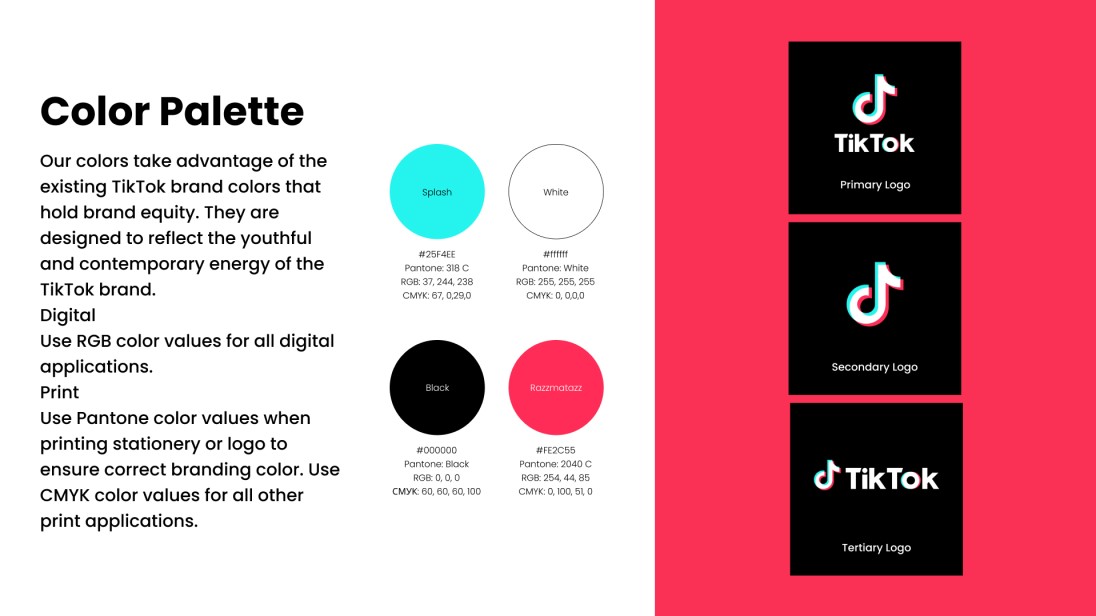
TikTok ’s brand guidelines examples are bold and vibrant. They consist of logo positioning, animated logo, a bold colour palette, and design patterns such as circles and gradients that fit the energy of the app. The voice is friendly and approachable, and the brand is fun everywhere.
2. Dropbox
Dropbox created interactive branding style guide content instead of a static PDF. Their system has playful typography, vivid accent colour, flexible icons, and changeable illustrations. The grid layouts are even made to get one's creativity going, and the rules are like a design playground.
3. Mailchimp
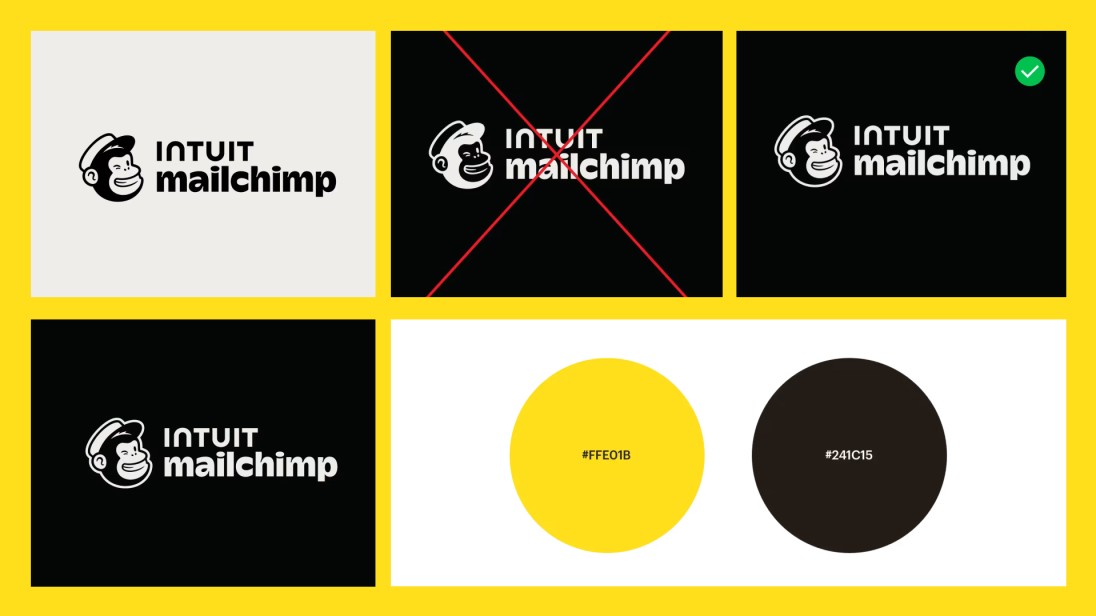
Mailchimp ’s brand guide example is one of the most personality-driven references. It is a mixture of hand-drawn illustrations, warm yellow colours, quirky typography, and a conversational commission writing style. The guidelines cover all the details of email templates and web advertisements and remain in line with the playful nature of the brand.
4. Spotify
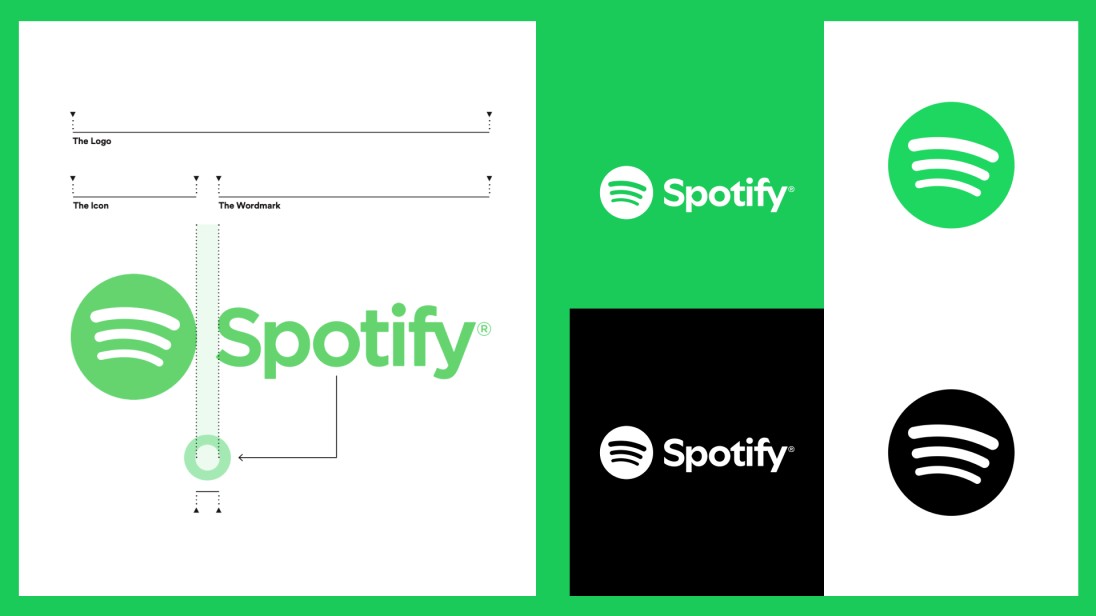
Spotify ’s guidelines highlight how to use its logo, green color, and clean sans-serif typography. They also discuss co-branding guidelines examples, which demonstrate how Spotify's branding will appear when it combines with partners. It also has motion design and audio wave patterns, which reveal its identity as music first.
5. Instagram
Instagram ’s branding guidelines example is simple but detailed. It gives a clear description of how to apply the gradient logo, what space should be surrounding it, and how it should look when used with other logos. It also provides instances of misuse, which serves to guard the recognisability of the logo.
6. Google (Material Design)
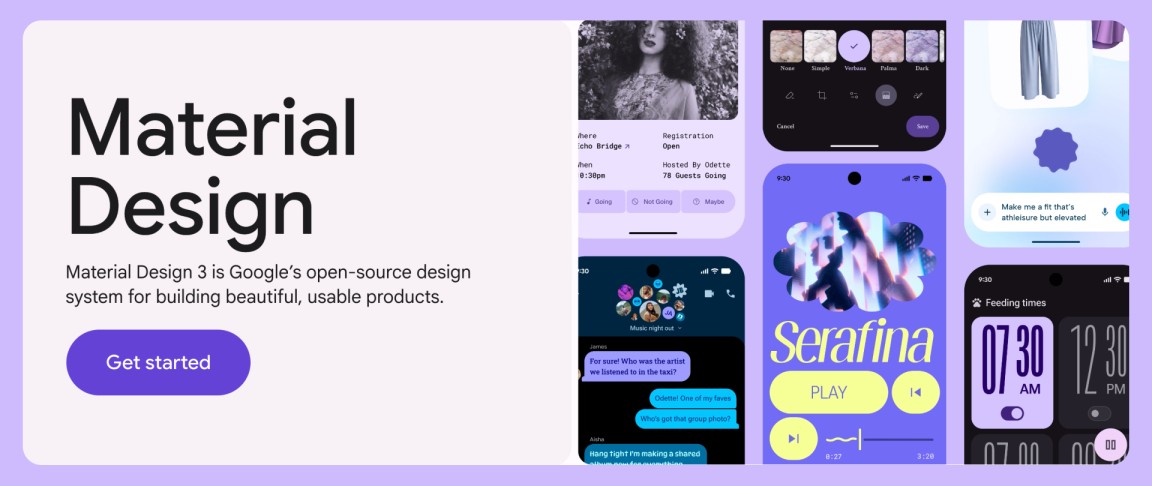
Google ’s Material Design is more than guidelines. It is a comprehensive brand identity guide with typography rules, colour tokens, spacing, accessibility standards, and ready-to-use elements. The guide simplifies the maintenance of the brand by designers and developers across the world.
7. Netflix
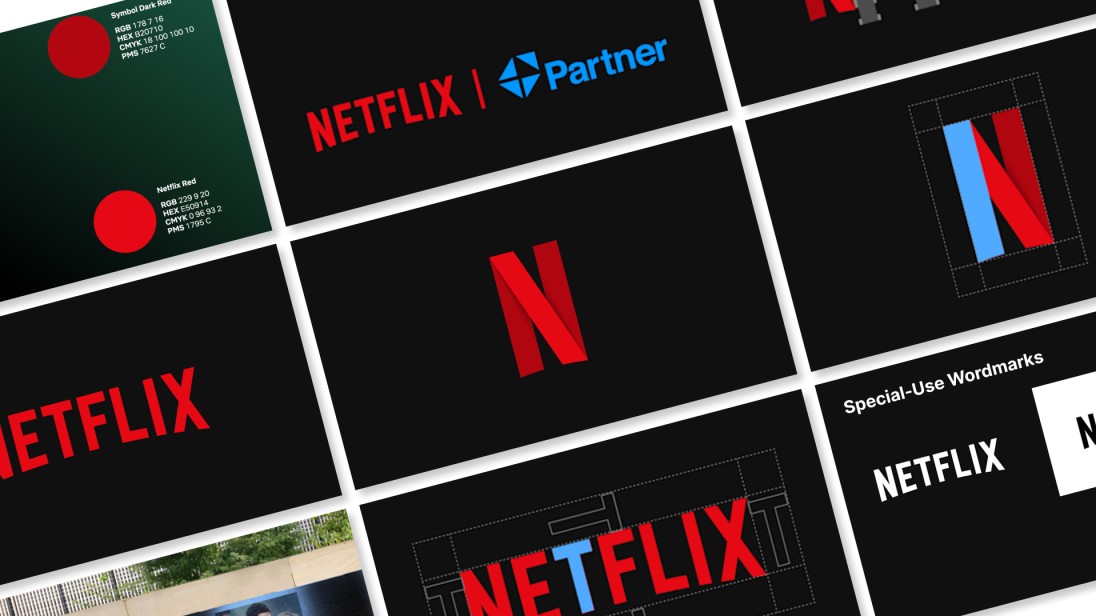
Netflix ’s company brand guidelines examples focus on clarity and control. The dark background palette, the red bold logo, and the clean typography are strictly defined. Their manual also explains how Netflix branding must be placed in co-branded campaigns so that all platforms are consistent.
8. Starbucks
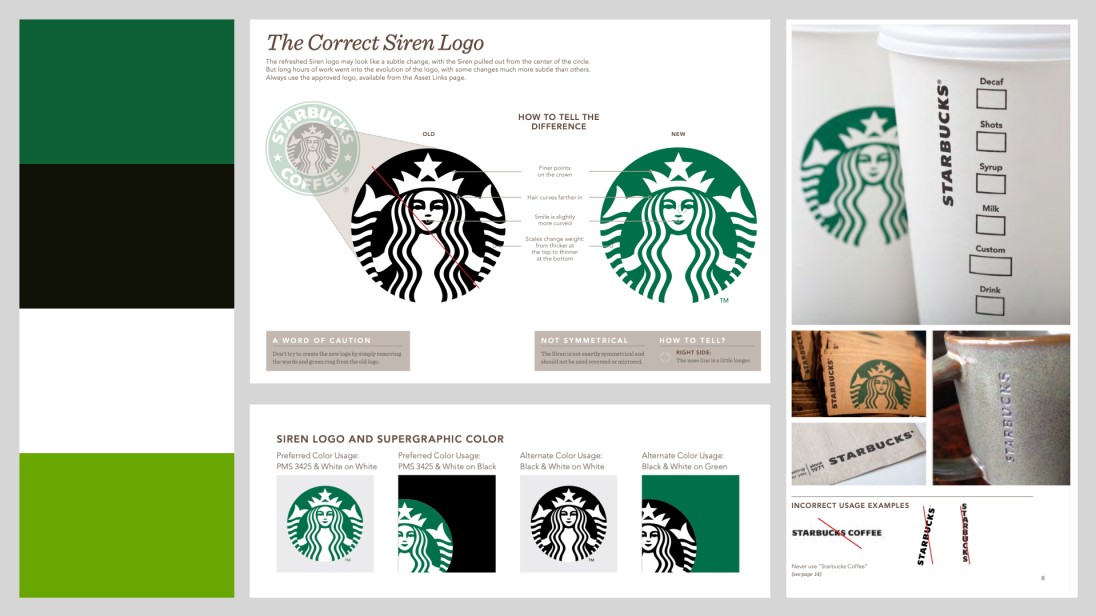
Starbucks incorporates abundant imagery, narratives, and designs in its regulations. It addresses the use of logos, a colour palette based on the history of coffee, typography, photo style, and packaging design. Everything connects back to the idea of warmth and community.
9. Uber
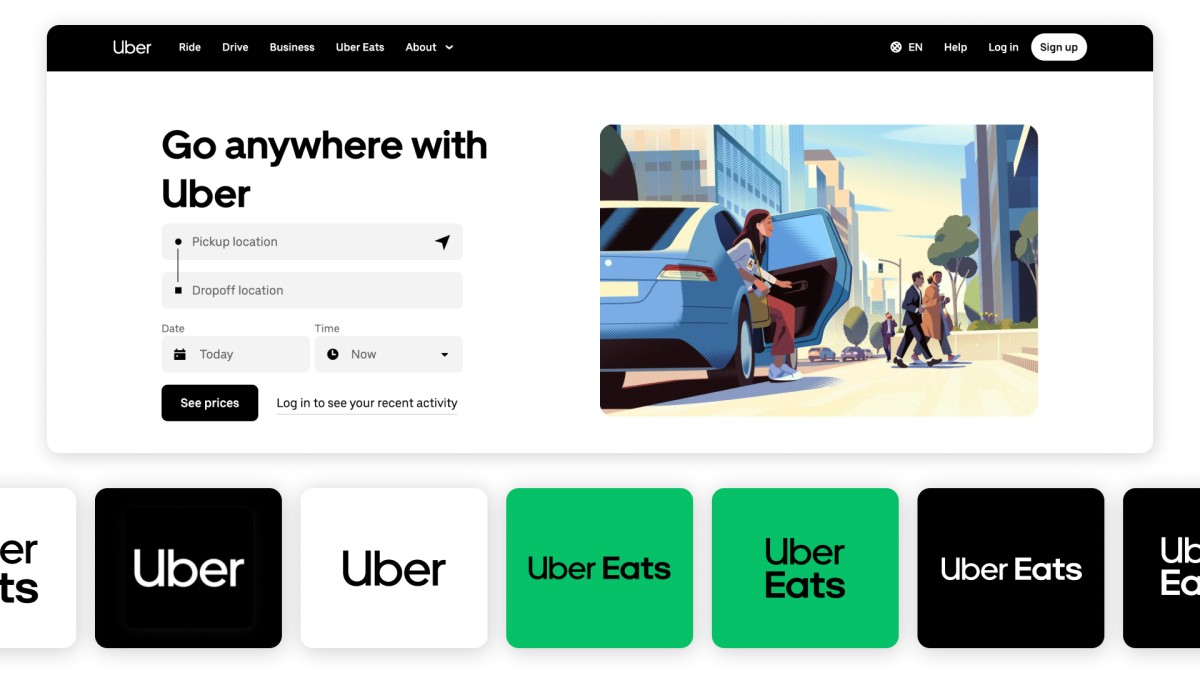
Uber ’s branding style guide is minimalist. They emphasize a black and white colour scheme, clean sans-serif font, wide layouts and the use of a simple logo. Its system is modular, hence easy to apply in app screens, billboards, and print.
10. Klarna
Klarna ’s brand guide stands out with its bright pink tones, bold fonts, and casual voice. It contains imagery, typography, digital layouts, and advertising copy regulations. The fun element makes the brand approachable within a serious financial environment.
11. Firefox
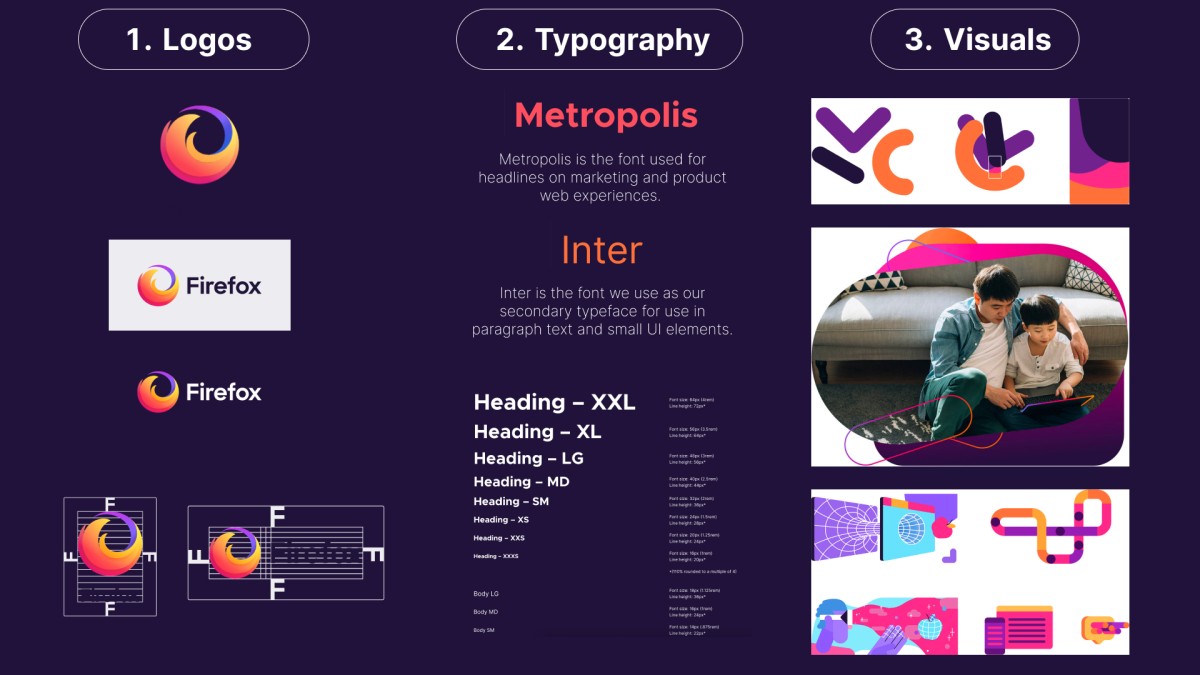
Firefox provides accessible brand style guide examples with easy logo downloads, color codes, and icon sets. They concentrate their visual identity on gradients, geometric shapes, and modern typography. The manual also brings out the right and wrong logo usages.
12. Walmart
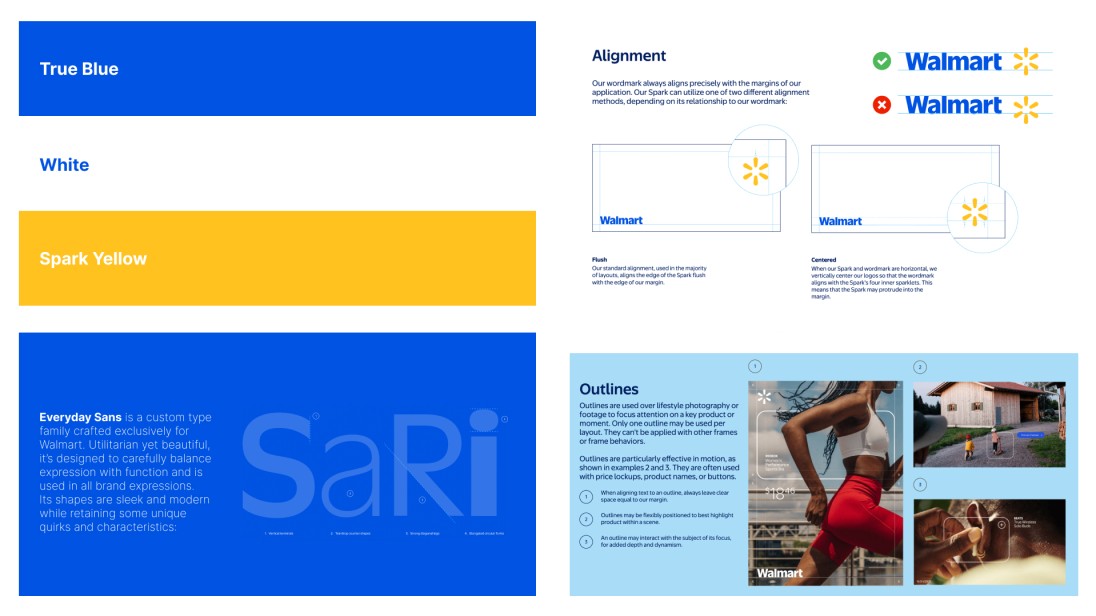
Walmart ’s brand book starts with a tone of voice before moving into visuals. It discusses message guidelines, placement of logos, colour scheme, style of photography, and in-store signage. It is centred on maintaining a friendly, transparent dialogue.
13. Canva
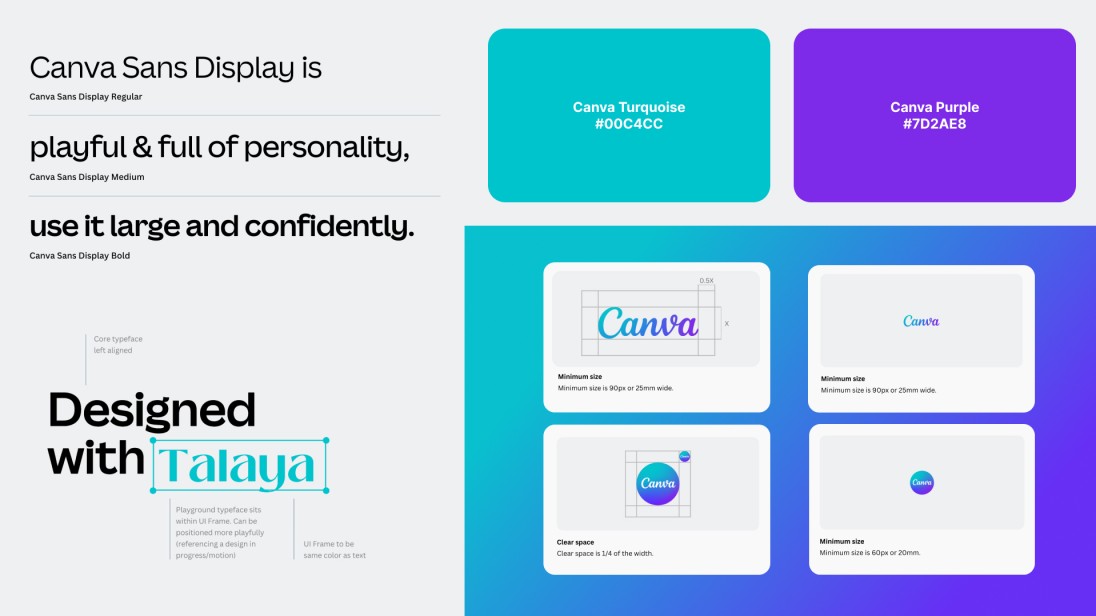
Canva ’s branding guide examples are simple and user-friendly. They describe logo variants, colour schemes, typeface, and visuals. It is centred around accessibility and flexibility in order to allow anyone, both beginners and designers, to abide by the rules.
14. YouTube
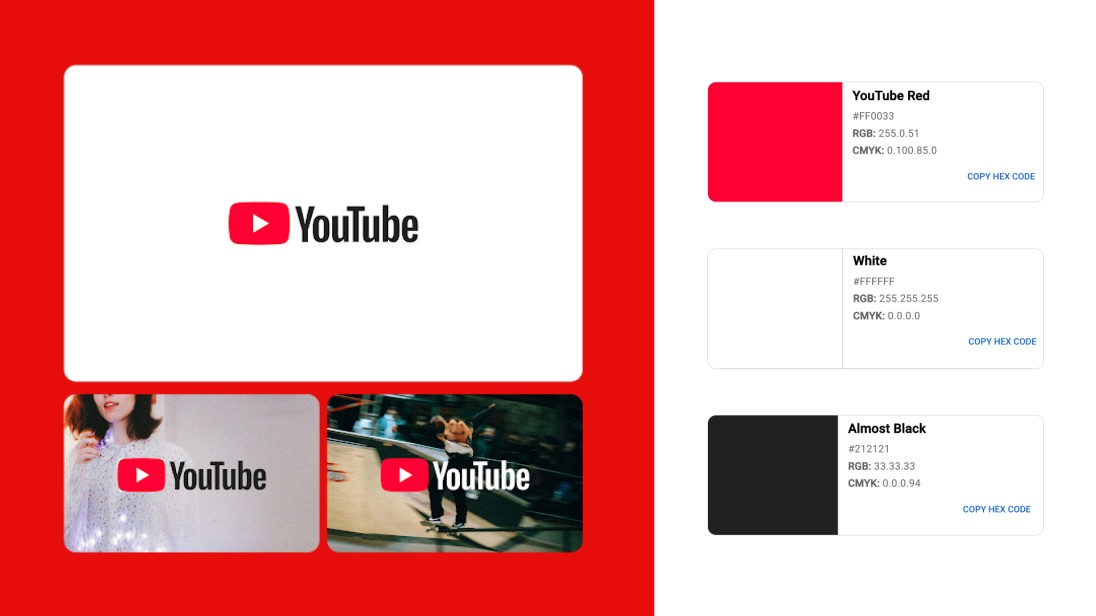
YouTube ’s brand guide is short but strict. It stresses white space near the red play logo, authorised colour use, and typography. It also specifies what should not be done on the logo, like stretching or altering colours.
15. Duolingo
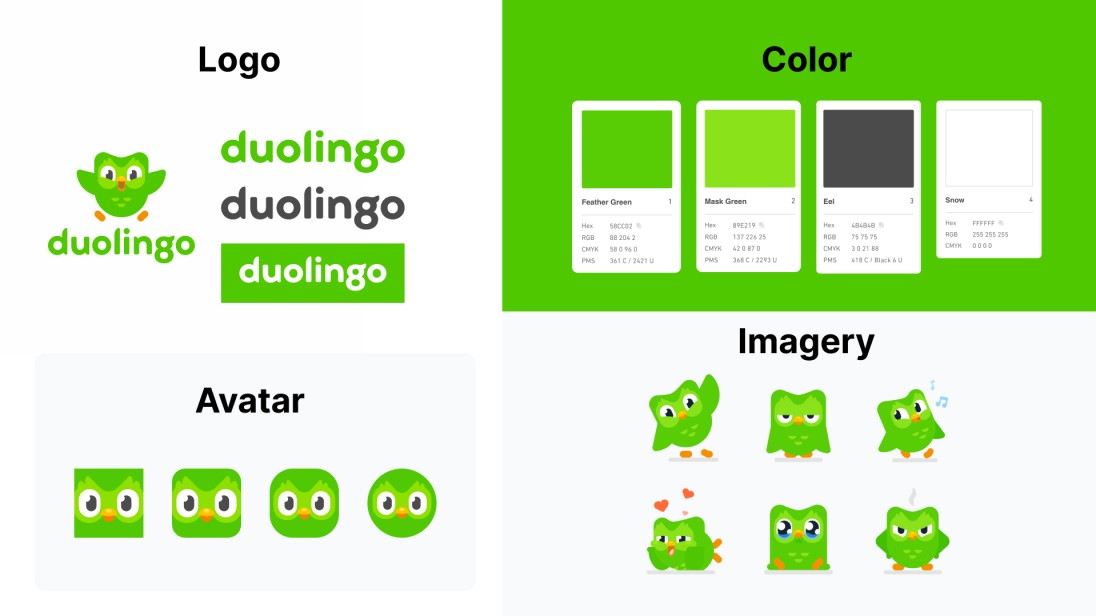
Duolingo ’s branding style guide revolves around its mascot, Duo the owl. They specify what to do with the bright green colour, rounded fonts, playful illustrations, and tone of voice. The rules make the brand joyful and friendly and remain the same.
16. Allbirds
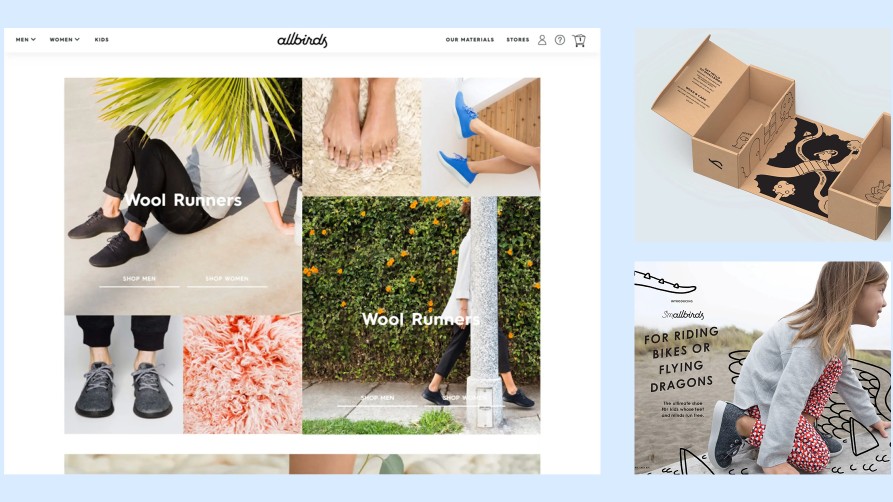
Allbirds ’ brand book focuses on eco-friendly visuals. The natural colour palette of greens, blues, and browns matches their sustainability mission. Typography is simple, and photography tends to have nature-related themes.
17. Glossier
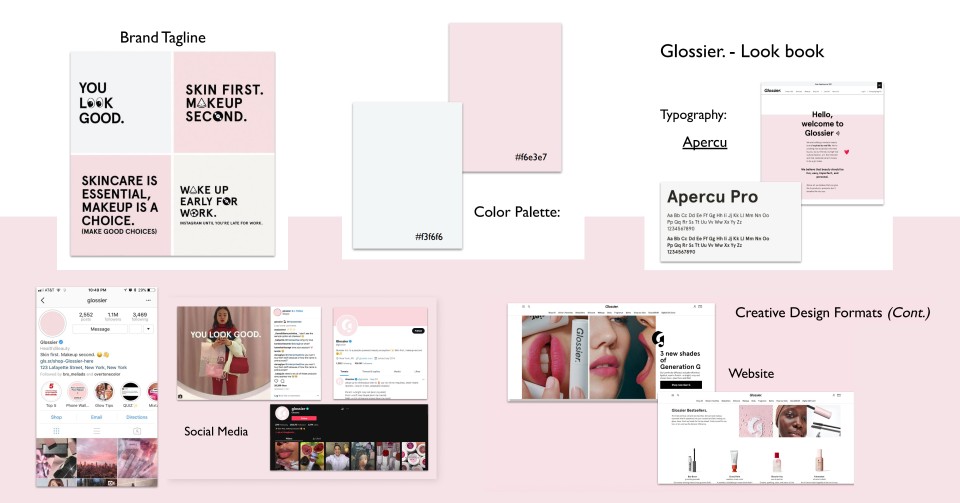
Glossier ’s brand style guides are minimal and chic. These are subdued pastel, subtle photography, plain sans-serif typography and a great deal of white space. The guide echoes its current, lifestyle-based beauty image.
18. Oatly
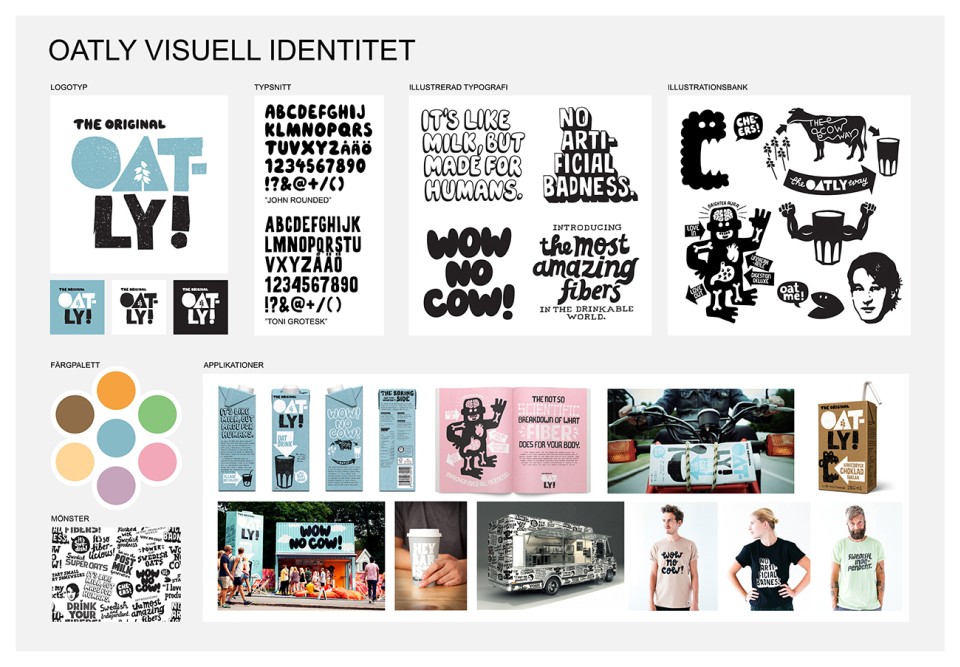
Oatly ’s guidelines are provocative and innovative. They embrace hand-drawn stories, loopy type, pastel grounds, and light-hearted copywriting. The guide also contains examples of brand guidelines regarding packaging to make each product the same.
19. Headspace

Headspace ’s best brand guideline examples are calming and clear. They emphasise plain drawings, curvy writing, muted tones and open spaces. The identity is light and friendly, which promotes the brand meditation movement.
20. Casper
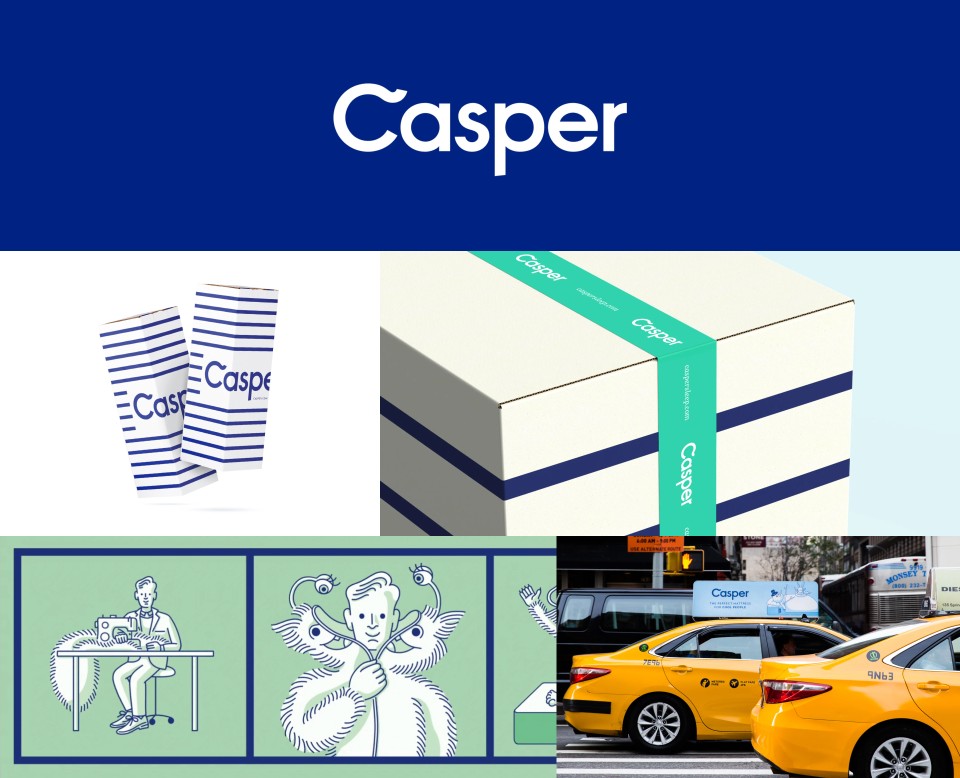
Casper ’s guidelines are a blend of new visuals and experimentation. Their usage of logos, deep blue and white colour palette, original illustrations, and style of photography are defined. The brand voice is also recorded in the brand guide sample to ensure that the communication remains the same in advertising and packaging.
What Makes a Great Brand Guide? (The Secret Behind Memorable Brands)
A brand guide is not a PDF of logos and colours. It is the outline that makes your brand identifiable and reliable in every place, from a site to a billboard. The ideal branding guides are those which combine images, messages, and values within a single, understandable playbook.
1. Keep It Clear and Simple
A strong branding guide is straightforward and demonstrates simple guidelines to follow. Unless your team or partners can grasp it quickly, they will not use it properly.
2. Cover Every Visual Detail
A good brand and style guide contains logos, font, colour code, images, and layouts, but it also demonstrates them in practice, such as in packaging, advertisements, and websites. This renders the guide not only theoretical.
3. Define Your Voice
The best branding guide template doesn’t stop at visuals. It covers tone of voice, language to use and language not to use. This helps your brand to always sound the same in emails, ads, or social media.
4. Make It Flexible and Accessible
Contemporary brand style guides can be online and interactive. They enable fast downloads, templates and updates to keep teams consistent and yet creative.
5. Show Do’s and Don’ts
A good brand style guide template contains plenty of what to do and what not to do. This eliminates errors such as logo stretch or incorrect colours.
Key Takeaways
- Design and communication consistency begin with a brand identity guide.
- Guidelines can be made applicable to all as they are clear and simple.
- The visuals and the tone of voice experience are a complete brand experience.
- Scalability and availability enable the guide to be applicable as your business expands.
- The business world does and doesn't shield your brand by avoiding misuse.








